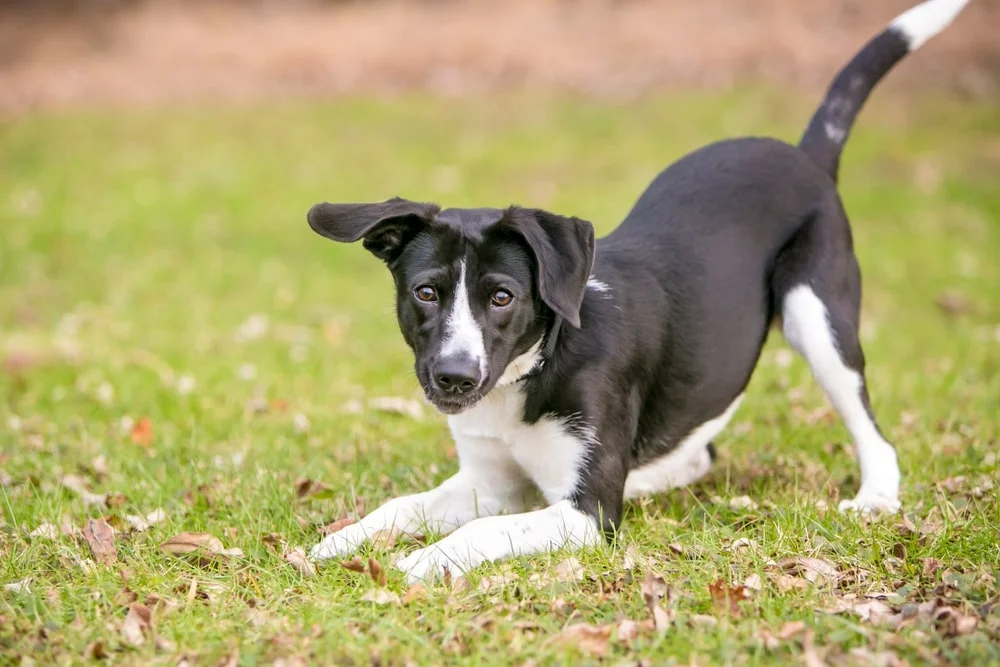PET BEHAVIOR
Of course, we’d all love to have verbal exchanges with our dogs and cats, for now, though, we’re happy to work with what we’ve got!
Fortunately, various noises like meowing, purring, barking or whining are fairly easy for us humans to understand. Unfortunately, interpreting tail movements is a bit more challenging.
However, it doesn’t have to be that way. All it takes is a little research to become a professional tail translator yourself. You won’t get an official license, but you will be able to impress your friends with your knowledge, all the while developing a much better rapport with your furry companions.
Cat Tail Movement
While there are some subtle differences between different cat breeds and their tail positioning, common gestures like curving and tucking are pretty universal and easy to decode.
Cat's Tail Sticking Straight Up
A tail sticking straight up into the air indicates a cat that is feeling friendly, confident and happy. Just as humans figuratively (and sometimes literally) hold their heads up high when they’re feeling particularly good about themselves, a cat proudly hoists its tail!
Cat's Tail Lowered to the Ground
When it comes to cat tails, it seems that opposites apply, at least in the case of low versus high. Just as a high tail signals a cat may be feeling welcoming and amicable, a tail that is lowered to the ground most often signals aggressiveness or, at the very least, defensiveness. Probably best to hold off on petting in these scenarios.
Cat's Tail Tucked Tight
A tightly tucked cat tail can signify a number of emotions, none of which are particularly positive. These can include anything from submission to unease to stress to fear. Proceed with caution—for a cat that feels cornered, fear can often turn into offensiveness!
Cat's Tail Puffed up and Enlarged.
Like many animals, cats like to “puff” themselves up to appear larger when they feel threatened by perceived attackers, and their tail is noticeably enlarged in these situations. This impressive visual display is often coupled with an arched back, extended ears and a substantial amount of hissing. Again, proceed with caution! When your feline’s tail has that staticky look, attacking is often top of mind.
Cat's Tail is Curved
Also lovingly referred to as “the question mark,” a cat with a slightly curved tail is generally feeling quite playful! The curvature of the tail is commonly concentrated more towards the tip of the tail like a hook. Playtime is imminent and human interaction is greatly encouraged.
Cat's Tail is “Wrapped”
A long-time favorite of loving cat owners who can now cast aside any doubt that this gesture is anything besides what they’ve long suspected: The feline version of a hug! So, whenever your cat brushes by with its tail gently wrapped around your leg, be sure to return the favor! Oftentimes, cats will even wrap their tails around members of their own kind. This, too, is an expression of friendship and affection.
Cat Whipping Tail
Another sure sign of agitation, tail whipping is a warning that your cat is ready to ambush whatever it is that’s getting on its nerves. The more aggressive the whipping, the more antsy the cat. Whenever you see this sort of tail lashing, take care to see what it is your cat is so fixated on…hopefully it’s not your tapping fingers!
Cat Gently Swishing Tail
This is your cat in heavily focused playful predator mode. The gentle swishing of the tail represents a much more nuanced playfulness and/or curiosity than the outright agitation indicated by an aggressively whipped tail. There’s something interesting afoot, and your cat is ready to engage!
Dog Tail Movements
As mentioned above, the immense variety of dog breeds means there is an equally impressive amount of variety in regards to tail shapes and lengths. Naturally, this makes it a lot harder to generalize emotions and nuances like one can with cats. Still, there is a lot to be learned from research and observation.
In general, there are two major assumptions that people make when looking at a dog’s tail. First, that wagging means the dog is happy; second, that a tucked tail means a submissive dog. However, neither should be regarded as universally true.
With so many breeds, there is a lot of room for distinction—in fact, the very direction that a dog’s tail wags can change the meaning drastically! For example, a swing to the right generally indicates happiness or excitation, but a swing to the left indicates less joyful emotions such as fear, insecurity or even a warning not to approach. Now you can see why it’s so important not to assume!
In many ways, learning how to effectively interpret a dog’s emotions via its tail movements is like learning a new language. It’s confusing at first, and this becomes even more apparent as you encounter the myriad dialects (i.e., lengths and shapes) that can challenge everything you’ve learned so far. But don’t fret: A great deal can be learned in a simple afternoon of reading and research, but a good rule of thumb is to always read a dog’s tail position relative to where the tail generally rests. And, of course, if it’s your dog, you already know way more about its personality than anyone else—that’s a great head start!

